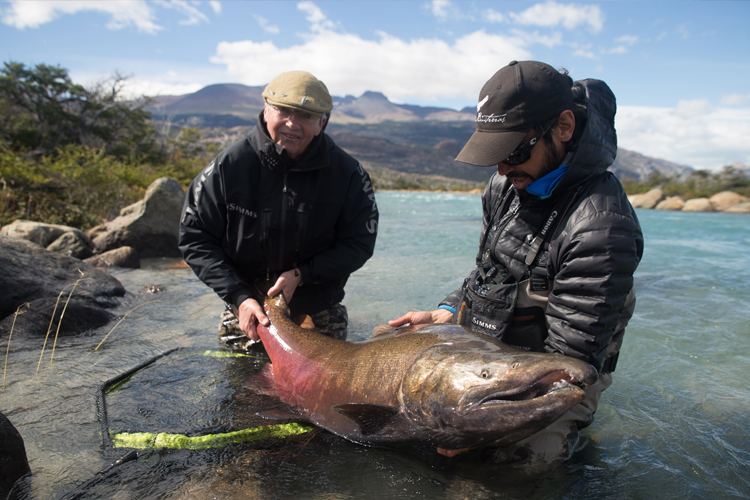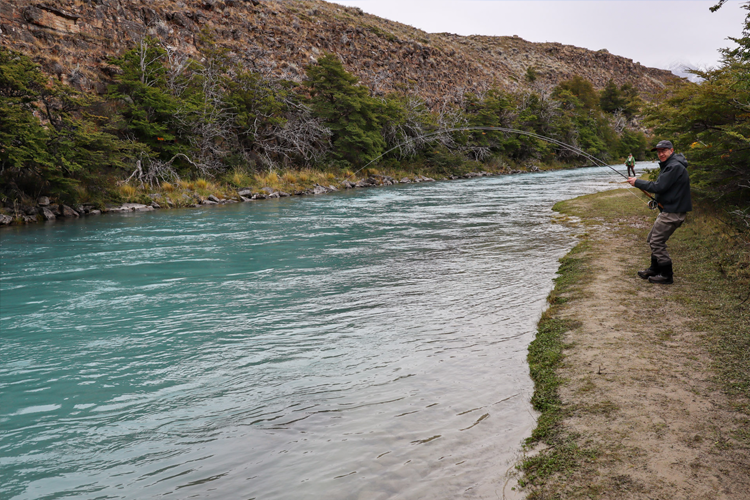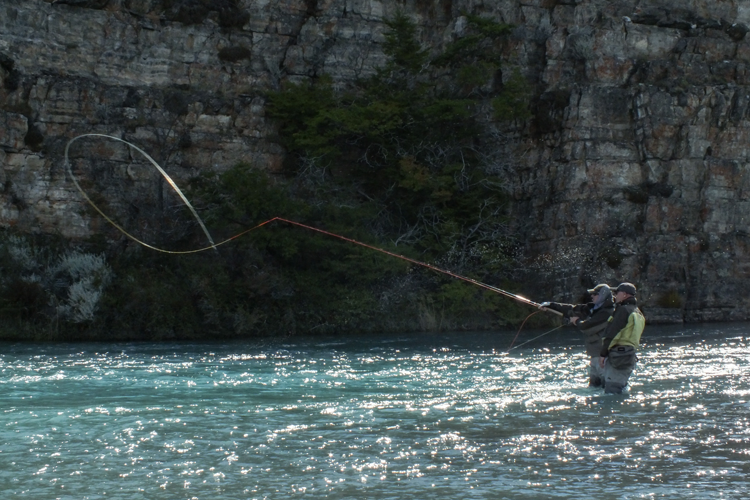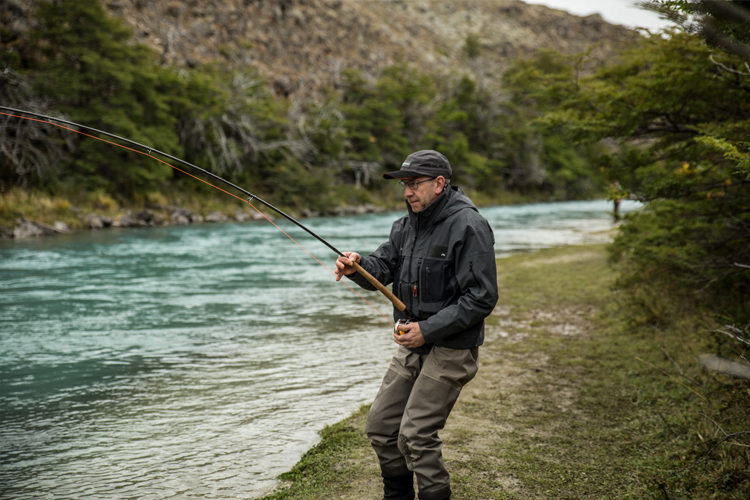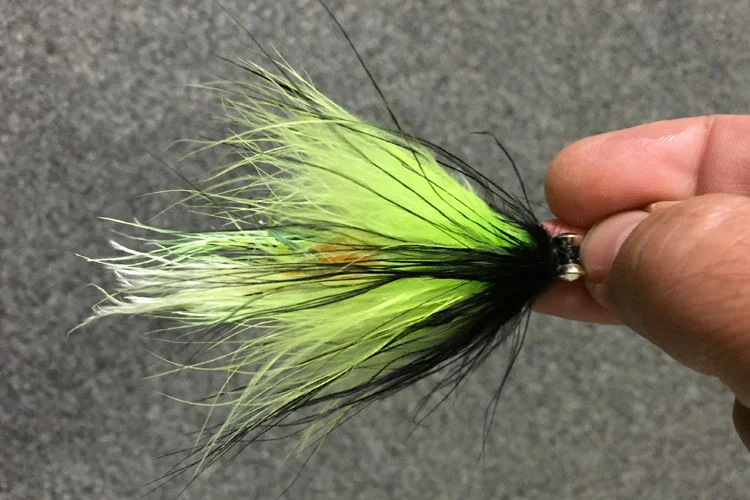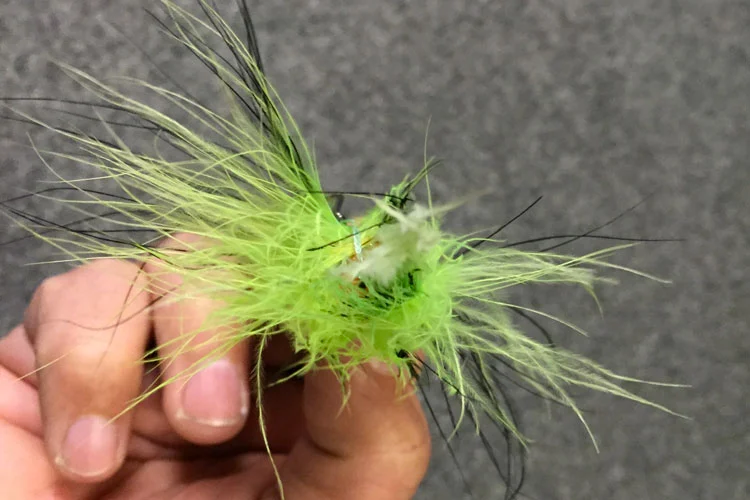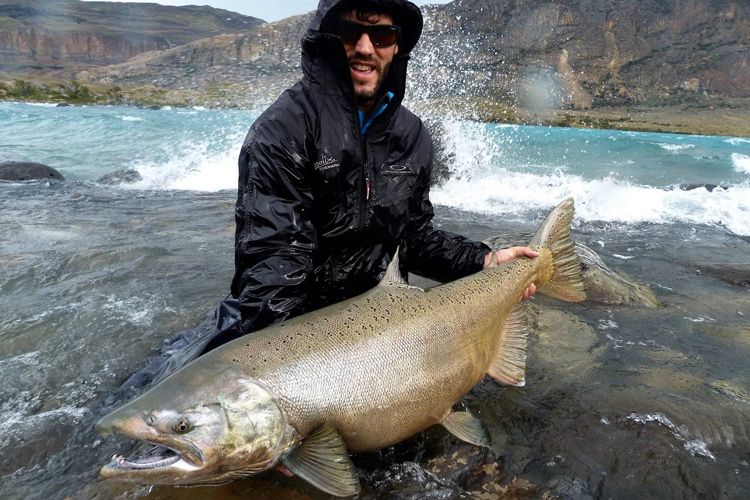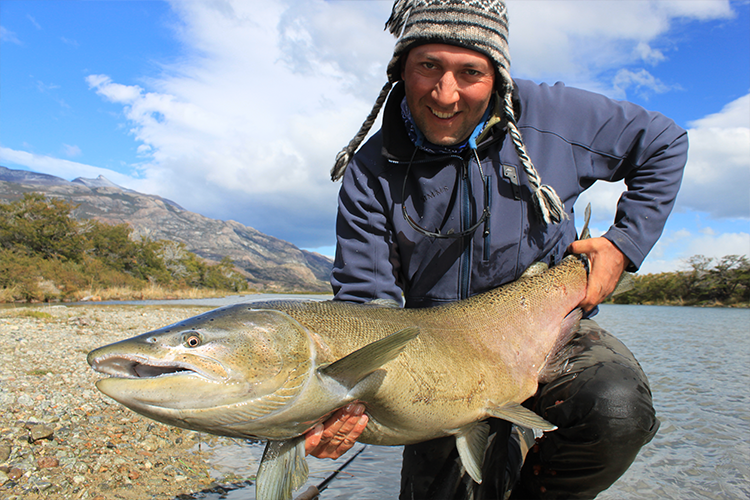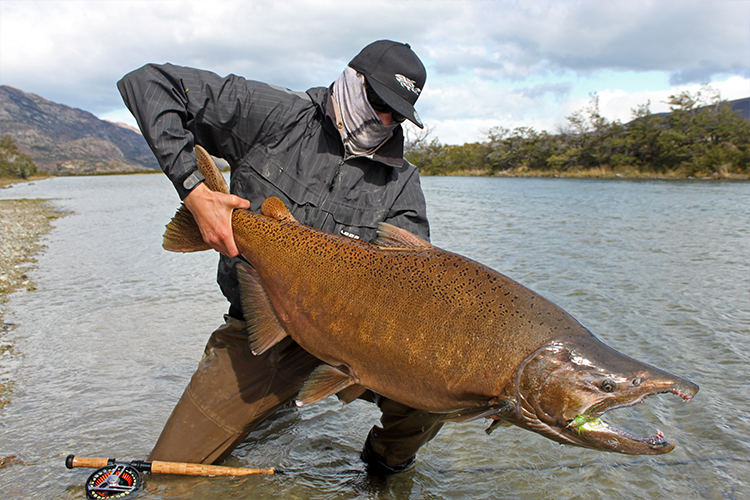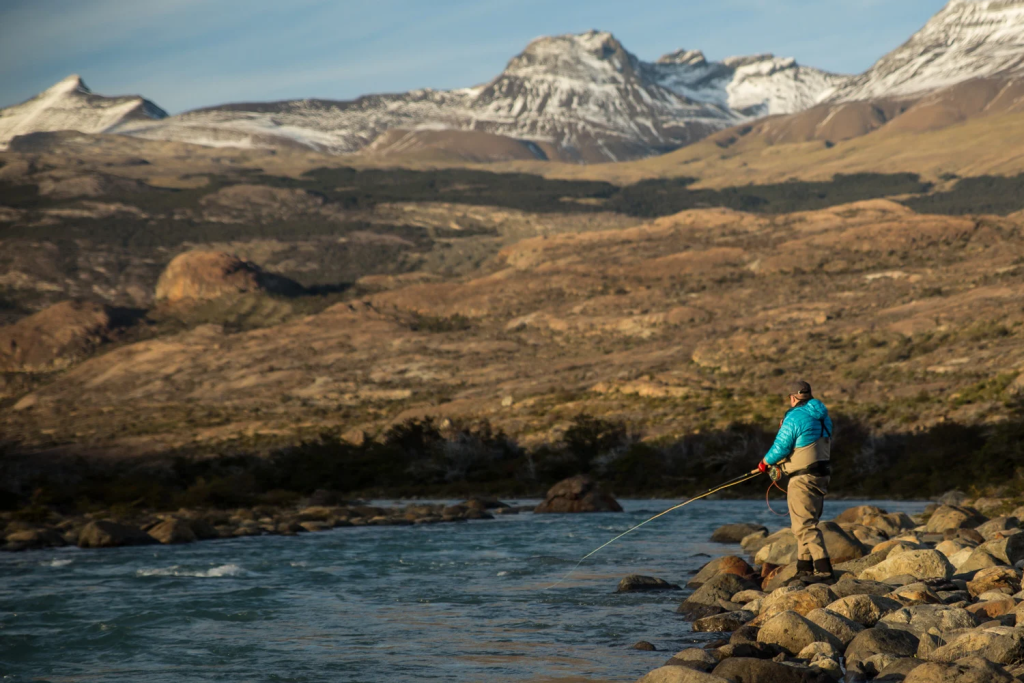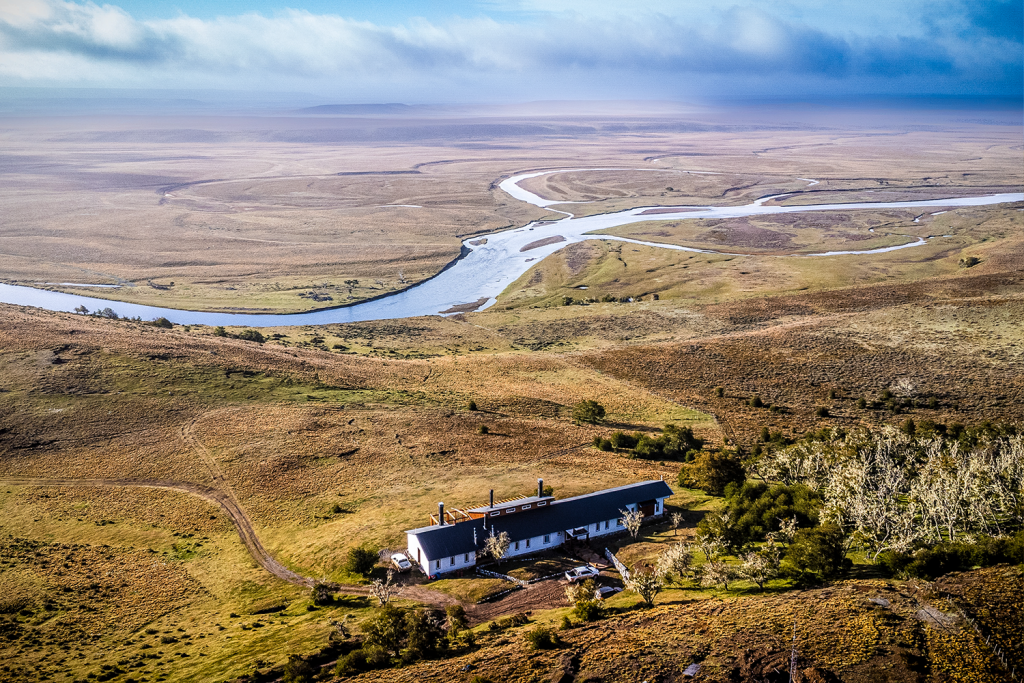Swinging flies for Chinook Salmon is often an underused tactic with anglers sticking with what they know and avoiding trying new things. How many times have you heard the saying, “a thinking angler catches more fish?” It’s a saying that gets used a lot, but unfortunately, It’s not given much attention.
The Broadside Presentation
Its that time of year again when our thoughts return to fishing for Chinooks, the mighty King Salmon. There is nothing better than Swinging flies for Chinook Salmon. This reminded me of a situation that happened while fishing in Argentina for huge Chinooks. On this small river, only 8km long, one such run is called the channel, for apparent reasons. Facing you is a vast rock wall resulting in a deep channel in the middle of the river, which the Chinooks love to rest in.
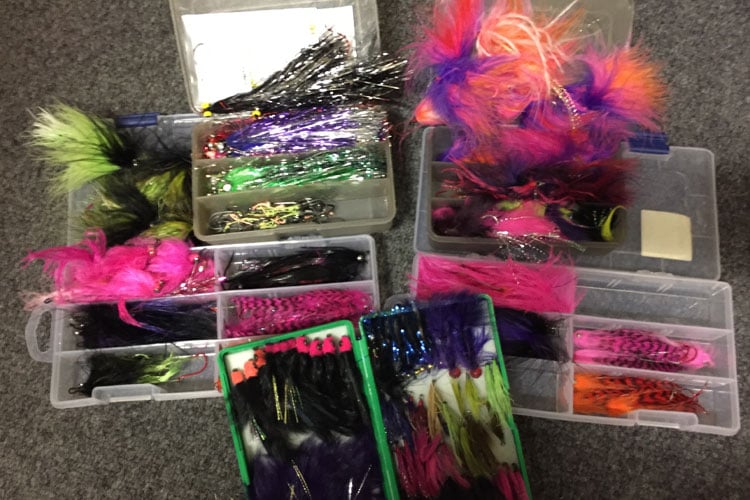

On one of our first trips a few years ago now, when we were testing out the river, a customer and I were fishing this section for the morning. This section’s challenge was the channel is not that wide but very deep, so the amount of time the fly has in the fishable zone is short.
The customer went through first, and I was following. On our first pass, we had no interest at all, even though we were surrounded by Chinooks bigger than we had ever seen before, rolling all over the run. After a short rest, we started again; this time, I could not help but think that we were not getting things right. It was then as I watched our customer in front of me, again and again, cast a delightful long line 45 degree angle to give the perfect down and across swing, offering the fish an excellent slow presentation of his fly.
It was just then I thought, what if they want a faster swing with more of a broadside presentation, meaning the fly appears bigger and quicker even though they could only see it for a short period as it crossed the channel. I just reeled in a bit of line and cast square to the bank – basically a 90-degree angle.
To cut a long story short, within 2 hours of fishing, I’d landed three mighty kings. But how and why did this have such an effect on the catch rate? It is simple; change the fly’s angle across a salmon’s nose, allowing the fly’s profile to appear much more prominent to the fish, can be far more effective than the usual down and across swing. A lesson I learned from not just trying to think about how good am I was casting and, more importantly, what is happening under the water and my fly’s presentation.
Swinging flies for Chinook Salmon a technique I have used when the situation calls for it time and time again, and this broadside presentation has proven to be a killer method.
How to fish the Broadside presentation when Swinging Flies for Chinook Salmon?
Of course, each run and fishing situation may need to fishing in a slightly different manner, but my usual technique for fishing for Kings goes something like this.
King salmon usually sit in the deeper, faster currents of the river. So, most of the time, we need heavy sink tips and large flies to give the fish as good a chance as possible to see our offerings. The best way of doing this is to show flies broadside throughout the swing, giving the fish a side-on view instead of the fish looking at the end of the fly. A King has far more chance of seeing a 4 or 5-inch fly swung perpendicular to them than if you showed them the same fly but with only an end-on view, which, in a fast water current, would look about as big as the tip of your little finger.
To achieve this, cast to the far bank at 90% or with a very slight downstream angle and immediately throw upstream mend. You must complete this without moving your sink tip (Another little tip making sure you do not cast out all your running line and have enough loose reel line to achieve the mend. With your top hand, make sure you have a loop of line about a rods length. Hold this loop with your thumb against the handle of the rod; only open your fingers on the cast to shoot your running line. The cast will stop once all the line has travelled out of the rod and hits your thumb, and then you can release your thumb, dropping the last coil of the line ready for you to make the effective mend)
As soon as I’ve made the upstream mend, I take two or three steps downstream and lead my rod tip down to my line. As soon as I feel the line go heavy, the fly is under tension and is beginning to swing. This action has let the fly get down to a deeper depth than a regular 45-degree angle cast. Once my fly is under tension and giving the broadside swing, I will lead my rod tip into the downstream bank to help the fly swim across the fishes nose. If the swing begins to lose a little pace as it comes out of the primary current, I will even throw downstream mend into my line to help speed the fly up a little. I have often witnessed the following King provoked into striking a fly with this change of speed.
As I mentioned initially, it’s the thinking that catches fish, not just the motions, but that is what I have loved about fishing for nearly 50 years; even today and hopefully every day on the water, I will keep learning.
Tight Lines,
Peter
Contact us
If you would like to learn more about fly fishing and enjoy the fantastic sport of fishing for Chinooks, why not join us on one of our dedicated hosted trips or any of our guided fishing lodges. See the full details here on our website.
Alternatively, if you would like to discuss this topic or a potential trip with a member of our fishing fly fishing team, you can contact them on 01603 407596 or by emailing info@sportquestholidays.com.
If you would like to see some fishing action in video form, you can find all of our Chinook Salmon fishing videos here in our handy Youtube playlist!
